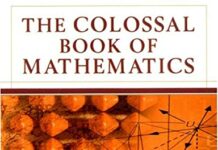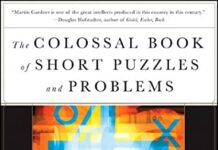
Ebook Info
- Published: 1987
- Number of pages: 224 pages
- Format: PDF
- File Size: 6.94 MB
- Authors: Martin Gardner
Description
Here is Martin Gardner’s first collection of short stories. Culled from fiction written over the years for such magazines as Esquire and the London Mystery Magazine, The No-Sided Professor is proof that Gardner’s expertise does not stop at his scientific and mathematical works. Only Gardner can infuse short stories with the same masterful charm, wit, and philosophical brio that have brought him legions of fans through his mathematical-puzzle books and investigations into science and pseudoscience.Gardner introduces us to the “No-Sided Professor,” Dr. Stanislaw Slapenarski, who by means of a kind of mathematical yoga blips himself and his nemesis into another dimension. In “At the Feet of Karl Klodhopper,” Gardner tells an engrossing story of lust and murder in the art world. These and other stories reveal Gardner’s astonishingly wide range of intellectual insight and cultural acumen.The No-Sided Professor is full of tales of fantasy, humor, the bohemian life, topological wizardry, and mystery. All are stamped with the unmistakable seal of a master storyteller.
User’s Reviews
Editorial Reviews: About the Author Martin Gardner (1914 – 2010), the creator of Scientific American’s “Mathematical Games” column, which he wrote for more than twenty-five years, was the author of almost one hundred books, including The Annotated Night Before Christmas, The Annotated Snark, Martin Gardner’s Favorite Poetic Parodies, From the Wandering Jew to William F. Buckley Jr., and Science: Good, Bad and Bogus. For many years he was also a contributing editor to the Skeptical Inquirer.
Reviews from Amazon users which were colected at the time this book was published on the website:
⭐I have used the No Sided Professor essay, first encountered in a 1958 compendium “Fantasia Mathematica,” by Clifton Fadiman, then republished by Springer Verlag in 1997, to my high school math students over my 50-year teaching career. The eponymous essay describes what can happen to an inherently two-dimensional strip of paper when it is lifted into three-dimensional space, given a half-twist, then joined at the ends. The normally two-sided piece of paper loses one of its sides and becomes a one-sided surface, a Moebius strip. Gardner’s lead character, Professor Stanislaw Slapenarski, finds a way to fold a piece of paper in such a way that it loses both of its sides, and becomes a no-sided surface (i.e., disappears). Skeptical Professor Simpson disagrees with Slapenarski, who winds up knocking him out then folding him into a no-sided surface! Interestingly, only the professor disappears into a higher dimension, not his clothes. By analogy, a person in a two-dimensional world could be lifted out of this clothes and disappear into the third dimension, leaving his clothes behind because they are not closed along the third dimension. Using Gardner’s insight, one could imagine Biblical accounts of Christ’s resurrection if the body were lifted into a higher dimension than the third, leaving the linens undisturbed. Gardner’s essays are well worth reading ant thinking about!
⭐Light, entertaining stories relating to mathematics, chess, science, etc. A Moebius strip is a one-sided surface. A mathematician in the title story claims he can construct a no-sided surface.
⭐This has stimulated a lot of interest in more obscure maths and my students have gone on the question and develop their skills.
Keywords
Free Download The No-Sided Professor in PDF format
The No-Sided Professor PDF Free Download
Download The No-Sided Professor 1987 PDF Free
The No-Sided Professor 1987 PDF Free Download
Download The No-Sided Professor PDF
Free Download Ebook The No-Sided Professor

